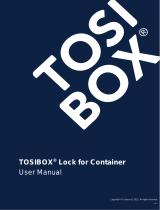
Contents
Hosting container applications ······································································· 1
About container applications ······························································································································ 1
Containerization and container ·················································································································· 1
Advantages of containers ··························································································································· 1
Container deployment and management ··································································································· 1
Container applications ································································································································ 2
Network communication of container applications ····················································································· 2
Restrictions and guidelines: Container application hosting ················································································ 4
Container application hosting tasks at a glance ································································································· 5
Enabling the container feature ··························································································································· 5
Deploying Docker containers ····························································································································· 5
About deploying Docker containers ··········································································································· 5
Restrictions and guidelines for Docker container deployment ··································································· 5
Reloading the Docker daemon configuration ····························································································· 6
Deploying a Docker container ···················································································································· 6
Configuring network parameters for containers ································································································· 7
Container network parameters configuration tasks at a glance ································································· 7
Configuring interface Loopback 0 ·············································································································· 7
Configuring interface Virtual-Eth-Group 0 ·································································································· 8
Enabling the kubelet service ······························································································································ 8
Container application hosting examples ············································································································ 9
Example: Deploying a container application that uses the same network namespace as Comware ········ 9
Example: Deploying a container application (separate network namespace)·········································· 12
Appendix Docker client command reference ··································································································· 14
Downloading and importing images ········································································································· 14
Pulling images ·········································································································································· 15
Running a container by using the docker run command ·········································································· 17
Allocating hardware resources to a container ·························································································· 17
Attaching to a running container ·············································································································· 18
Returning to the Comware CLI ················································································································· 18
Listing containers ····································································································································· 18
Saving containers ····································································································································· 19
Hosting RPM applications ············································································ 20
About RPM application hosting ························································································································ 20
Communication between RPM applications····································································································· 20
Restrictions and guidelines: RPM application hosting ····················································································· 21
Installing an RPM application ··························································································································· 21
Configuring network parameters for RPM applications ···················································································· 21
RPM application configuration examples ········································································································· 22
Example: Installing an RPM application ··································································································· 22
Appendix rpm command reference ·················································································································· 23
Downloading an RPM package without installing it·················································································· 23
Querying information about an RPM package ························································································· 24
Installing an RPM package ······················································································································ 24
Running an application that is installed through RPM·············································································· 24
Uninstalling an application that is installed through RPM ········································································ 24
Querying RPM package information (-qp)································································································ 25
Displaying rpm command help information ······························································································ 28
Configuring common container and open application parameters ················ 29
About configuring common container and open application parameters ························································· 29
Configuring common container parameters ····································································································· 29
Backing up container data························································································································ 29
Configuring common open application parameters ························································································· 29
Specifying a source IP address for open applications ············································································· 29
Preconditioning incoming IP packets ······································································································· 30




















